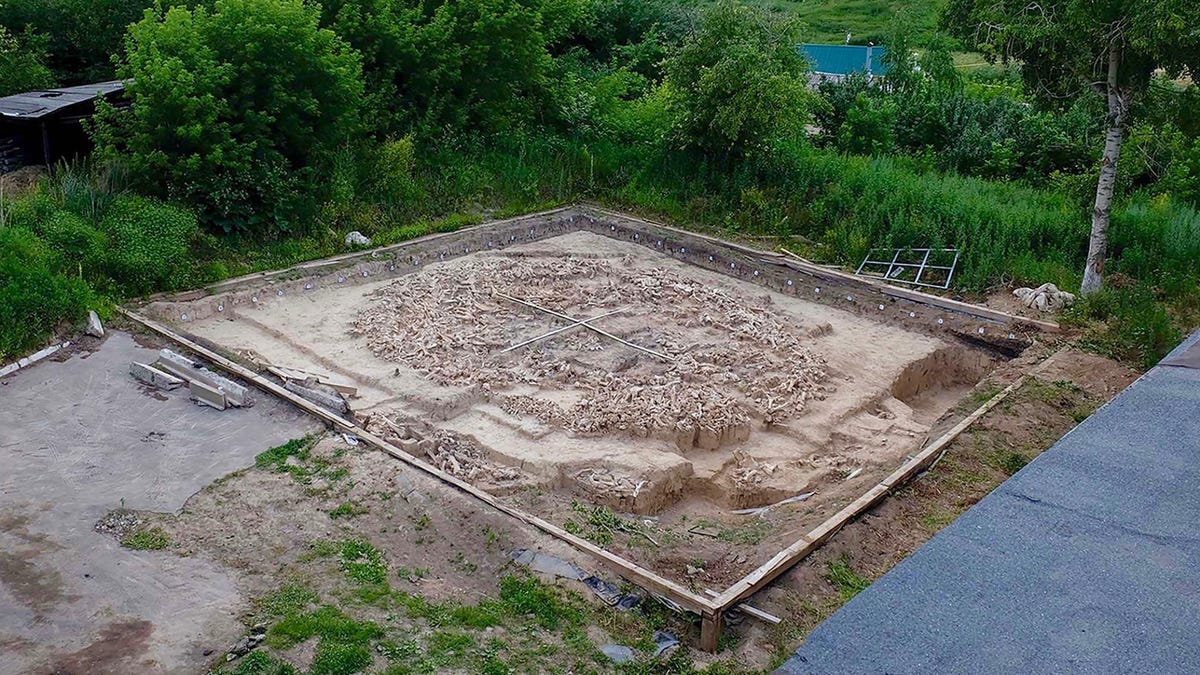Mysterious, circular structure found to be made from mammoth bones
Scientists determine the mammoth bones are 20,000 years old; offering more clues to human behavior during the Ice Age.

Here's a look at the circular mammoth bone structure studied at Kostenki 11 dig site in Russia.
A mammoth bone structure discovered at a Russian dig site called Kostenski 11 has been radiocarbon-dated and found to be more than 20,000 years old -- potentially classifying it as the oldest circular structure built by humans in the region.
The research, compiled by a collaboration of international research institutes and published in the journal Antiquity on Tuesday, reveals 51 lower jaws and 64 individual mammoth skulls were used to build the unusual structure's 30 by 30 foot walls.
In addition to mammoth skulls, various reindeer, horse, bear, wolf and fox bones were also found at the site, which lies approximately 300 miles south of Moscow.
Graphical representation of burnt bone fragment densities found at Kostenki 11.
"Kostenki 11 represents a rare example of Palaeolithic hunter-gatherers living on in this harsh environment," said Dr. Alexander Pryor, an archaeologist at the University of Exeter and lead author of the study, in a statement. "What might have brought ancient hunter gatherers to this site? One possibility is that the mammoths and humans could have come to the area en masse because it had a natural spring that would have provided unfrozen liquid water throughout the winter -- rare in this period of extreme cold."
Charred wood was also found within the circular structure, which led scientists to conclude people were burning wood as well as bones for fuel. In addition to the wood, scientists also found 50 charred plant seeds at the site.
"These finds shed new light on the purpose of these mysterious sites," Pryor said. "Archaeology is showing us more about how our ancestors survived in this desperately cold and hostile environment at the climax of the last ice age. Most other places at similar latitudes in Europe had been abandoned by this time, but these groups had managed to adapt to find food, shelter and water."
While the scientists better understand what these circular structures were made from, they can't be certain if the structures were used for ceremonial events or for food storage, mainly because the large diameter of the circle indicates it would have been difficult to add a roof.
"The unexpected finding of apparently short-duration or low-intensity occupation at K11-Ia raises important questions regarding the function and use of circular mammoth bone structures more generally, which required a considerable investment of time and energy to build," the study states.

